The Final Portrait (part 1)
Howard Hughes, a femme fatale, and a billion dollar painting at a house of ill repute

A true Las Vegas story, told in episodes.
by Jonathan Warren
Part 1: The Circus, the Count and the FBI
“I think my old neighbor was Howard Hughes’s mistress.”
Anywhere else, that might be a bizarre statement. But by 2012 little came as a surprise in the city where truth is always far stranger than fiction. I had known Ramona since she moved to Las Vegas, over 20 years before. She smiled as always, making a decadent Bulgarian breakfast for a small group of friends and neighbors, at her lovely home. My gaze left the chocolate pancakes as I made sure I understood what she said, through her Slavic accent.
She reminded me of the crazy neighbor she had suffered for years at her prior residence. Ramona was a famous circus performer in the former Soviet Union, before making it to North America just before the USSR fell apart. When she moved to Las Vegas in 1993, she lived in a house she restored in a perhaps less-than-desirable area. Her elderly neighbor then, a minor slumlord who had lived down the street from Ramona, was known to have once been a prostitute. It was said that she would hoard cash and vintage jewels in the walls of her house. Many were the stories in those days of that obnoxious, greedy octogenarian.
“You remember,” Ramona said, “she had that diamond in her tooth. It only showed when she smiled.” I did remember that feature, often spoken of by those terrified at the woman’s evil grin. The gleaming stone was occasionally seen, in her upper incisor. Ramona shuffled through some papers and passed me a local newspaper featuring a story about an author who had been a well-known FBI agent in Las Vegas. He was writing a book about the last will and testament of billionaire Howard Hughes.
The story of the Hughes estate was one I remembered well. Howard Robard Hughes was the richest man in America when he died in April of 1976. At the time I was about to turn twelve years old, delivering the local newspaper in the tiny town of Goodsprings, Nevada, just outside Las Vegas. My mother had been instrumental in converting the massive and beautiful Spring Mountain Ranch, which had been owned by Hughes, into a State park just a few years earlier. Hughes had been the most intriguing titan to occupy Las Vegas from 1966 until 1970, and still owned a few hotel casinos as well as 73,000 acres of the Las Vegas Valley. Local press was riveted to the unfolding probate case. Vegas headlines inked fresh revelations about in nearly every day. I read those in wonder, before folding and tossing the paper onto a doorstep, or nervously placing it on the bar inside the Pioneer Saloon at the edge of town.
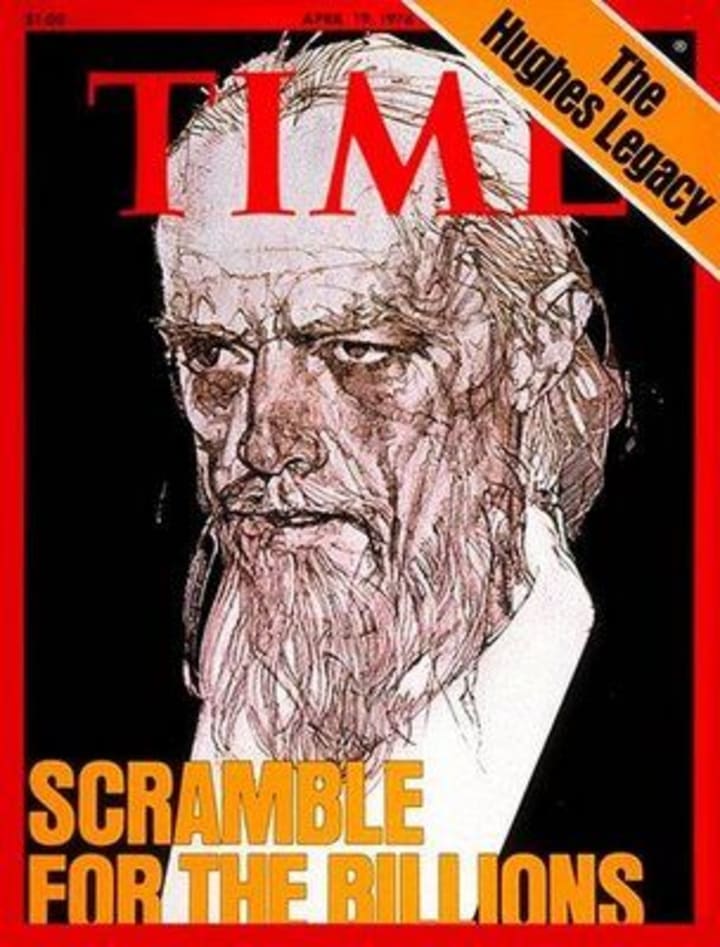
Astoundingly, the richest of all men had apparently died without a will, or direct heirs. His companies and distant relatives prepared to deal with the probate, when, many will remember, a holographic (handwritten) last will and testament of Howard Hughes suddenly appeared. The document was not witnessed, but holographic wills need not be witnessed in Nevada. It had turned up under strange circumstances at the Mormon Temple in Salt Lake City, Utah. Melvin Dummar, a Mormon from Gabbs, Nevada had anonymously left the document there, it was later revealed. He said he received it from a mysterious emissary who stopped in at the gas station Dummar owned in his tiny, northern Nevada home town.
Dummar was named in a part of the Will. Though his would-be share was a minor stake, it would amount to $158 million. The Will gave equal stakes to the Mormon Church and to the Boy Scouts of America. Interestingly, the remainder of the alleged bequest, according to the document - valued at over one billion dollars - was roughly the same rather complex distribution as was proposed by the probate beneficiaries. When pressed for an explanation as to why Hughes would leave him a substantial sum, Dummar finally told his now-legendary story of having picked up Howard Hughes in the central Nevada desert, face down on the side of the highway, in the cold wee hours of a December, 1967 morning. Dummar said he had revived Hughes, who was dirty and injured, and that the two had talked for hours as Dummar drove him to Las Vegas, where he said he dropped Hughes at the back of the Sands hotel.
Scared and unsophisticated, Melvin Dummar had initially lied about the genesis of the will, and his hand in getting it to the Mormon Temple. He would soon prove no match for the lawyers of the Hughes companies and relatives, and their influence on the district court in Las Vegas. What had been a loose consortium on the Hughes side suddenly consolidated against the Will. They then gathered into a public relations and corporate structure, with lasting effect on the assets and projects of the group for years to come. As his adversaries organized and focused, Melvin was made a joke in the press. What kind of lying buffoon would expect the public to believe such a story, after all? A salacious but feeble court battle saw the estate go to Dummar's adversaries. He later retired to southern Utah, never to live down the humiliation. A major motion picture even spoofed Dummar’s story, decades later.
Gary Magnesen retired from the FBI in Las Vegas, and happened to meet Dummar when he moved to southern Utah, almost thirty years after the Hughes trial. When the veteran investigator made apparent his doubt of Dummar’s famous story, the old gas station operator threw down a challenge the detective couldn’t resist. Melvin Dummar dared Gary Magnesen to investigate the story himself, and publish the results, whatever they may be. Dummar would give Magnesen all of his evidence, including much which he had been unable to get admitted into the district court case in Las Vegas, decades earlier.
Over the next few years, The result of Magensen’s work led to his first book on the topic, The Investigation. Things had not gone as Gary had expected. In fact, the veteran FBI agent grew convinced that Dummar was telling the truth all along. One key witness was the Las Vegas Airport Facilities Manager for Hughes Tool Company in 1967. He was a pilot whom Magnesen discovered had flown Hughes at various times, during the period it was believed the billionaire had never left his Desert Inn hotel. The pilot had since become a successful businessman, a well-known Las Vegan who held an ancient Italian title. The man never met Melvin Dummar, and thought nothing special of his own history working for Hughes, nor that it was in any way controversial, until he saw an article about Magnesen’s work. Count G. Robert Deiro was well into his 70’s when he called Magnesen to corroborate the story of Melvin Dummar. Deiro attested to the fact that it was he himself who had flown Hughes into the desert on that fateful night in 1967, and lost him there, the night before Dummar found the billionaire face down by the road.
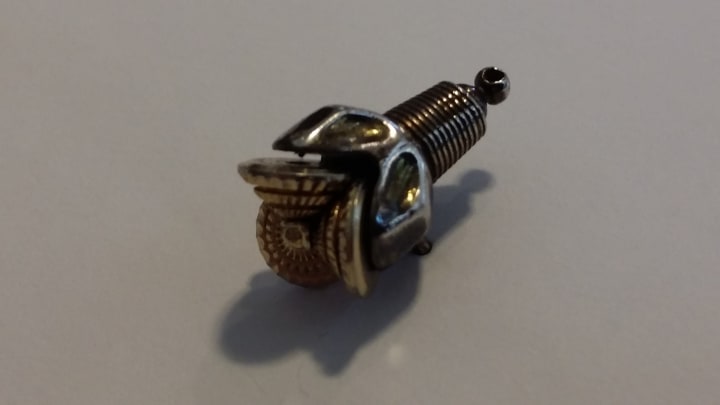
This revelation had grabbed the attention of the press in Las Vegas, partly because they knew Deiro, an auctioneer who had been a colorful pillar of the community his entire life. The story was also titillating, as Count Deiro revealed he had on the night in question flown Hughes, not for the first time, to a notorious legal brothel, the Cottontail Ranch. He recalled falling asleep in the kitchen of the rural bordello, and awoke in the early morning to find his employer was gone. “Your guy left hours ago, with another customer,” staff told him. Deiro rushed to the plane and took to the sky. An aerial search found no sign of Hughes, so Deiro headed to Vegas, expecting to be fired. He wasn’t, and Hughes had returned safely. The story continued that though Deiro worked for Hughes Tool for about another year, but never saw Howard Hughes again.
Count Deiro's book on the history of his father's marriage to Mae West
I knew the Cottontail Ranch, somewhat. Notoriously high profile on Interstate 95 at Lida Junction. It wasn't far from from Tonopah, Nevada, a living ghost town whose claim to fame was that Howard Hughes had married Jean Peters there in 1957. The legal brothel offerings of the Cottontail were about a two and a half hour drive from Las Vegas. There it unabashedly served customers from 1967 to 2004, under the direction of Madam Beverly Harrell. Harrell had written a book about the experience in 1978. An Orderly House is certainly not for the prudish, even today. Harrell is also remembered for nearly winning a State Assembly seat in Nevada, in the early 1980's.
The Count had reported flying Hughes to the Cottontail to see a prostitute with whom Hughes was infatuated. She was a Hollywood beauty, “cooling off” away from the authorities in California, to whom her companionship-for-hire occasionally became too well known. It was not uncommon for such women to take refuge in remote, legal Nevada brothels, choosing the desert heat over the type law enforcement brought. At a place like the Cottontail, a professional companion could continue to entertain clients with the use of private airstrips. Such was apparently the case with this favorite dalliance of Howard Hughes. Deiro had reported that he never knew her name, other than she was called “Sunny,” and she had an unusual piece of body jewelry.
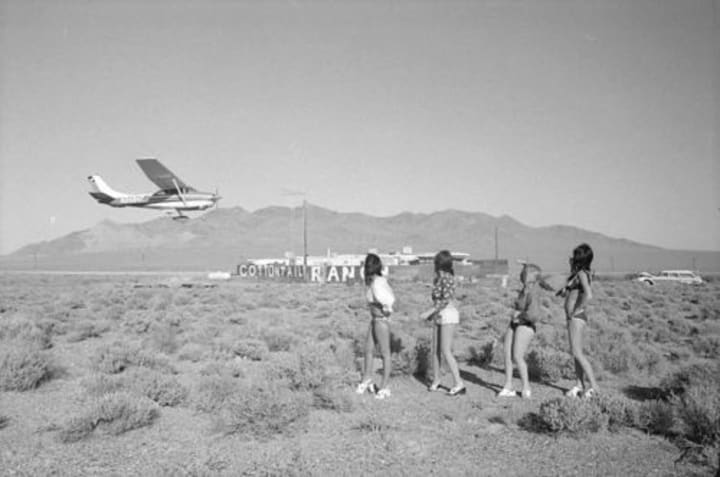
“You see?” Ramona pointed to the Count’s description of Sunny in the article she had handed me, “They say Sunny had a diamond in her tooth!” We agreed that the old neighbor might in fact be the missing-link prostitute, Sunny. We both realized the potential impact on the Hughes Will court case and the resulting estate, if in fact Sunny was proven to exist. Though it was too long ago to matter to the courts, I agreed it would be fascinating to get in touch with Magnesen, and see if he wanted to pursue the lead.
I didn’t know Gary Magnesen, but his bona fides were unquestionable as the former FBI Organized Crime Program Coordinator in Las Vegas. And I certainly knew who Count Deiro was. Foreman of the Grand Jury with a Las Vegas street named for him, Deiro was a philanthropist, known to me as an investor in commercial real estate loans for years. He was a beneficiary on some loans in which I had also syndicated investors. One such loan had been owned in part by my clients. After the recession, that loan had foreclosed on a big piece of Chinatown, and Deiro was among the group of property owners which included my friends. I found the Count’s email address and reached out. This lead to a phone call I'll never forget.
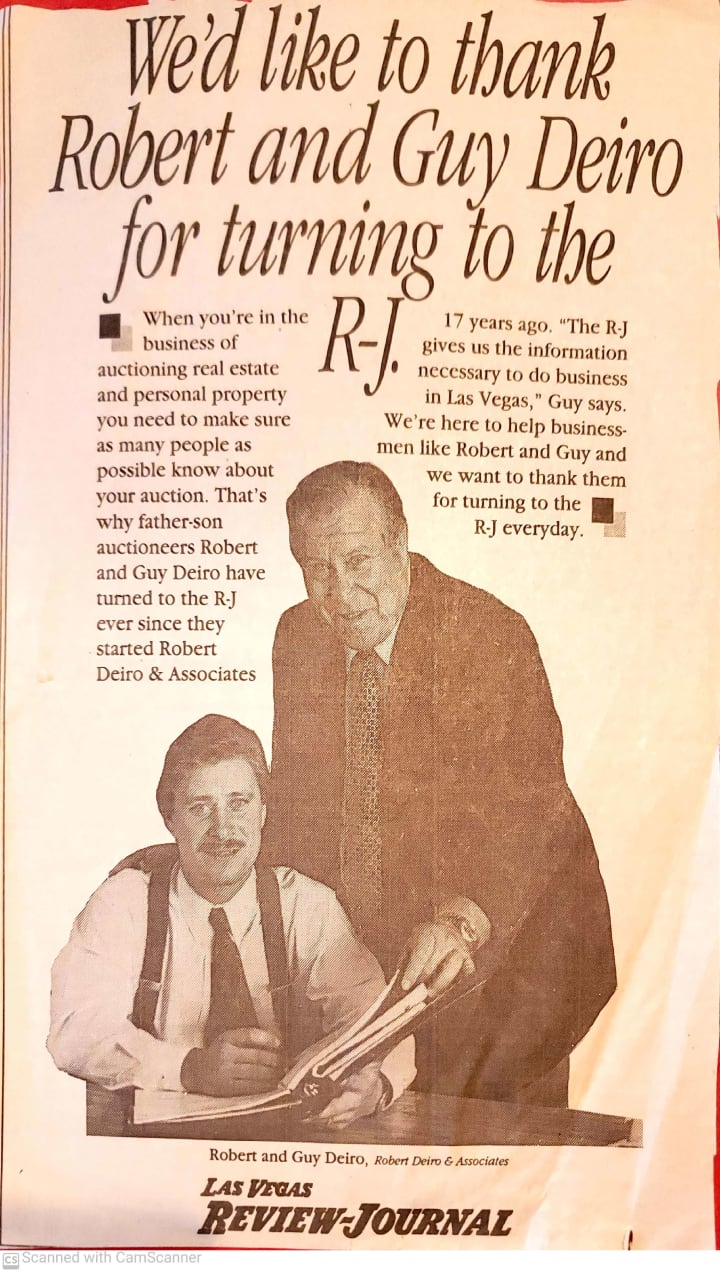
There is a certain kinship that native Las Vegans know in one another. It's a sort of 'no-nonsense, we are our own breed, save the sales rap' attitude. but there's something even more nuanced about it, something I've never quite been able to define. Whatever it is, Deiro and I knew it was there. Two local boys with a combined one hundred and twenty years in Las Vegas, having known of each other but never having spoken, we quickly hit it off and brought each other up to speed on our respective lives. The history of Count Deiro popped up in peripheral memories as we spoke. He was that guy in the paper for being first to auction off a casino, in 1977. When the State of Nevada finally began liquidating abandoned contents of safety deposit boxes the year I graduated from High School, it was Robert Deiro & Associates Auctioneers who took the loot to bidders. Photos in the paper showed Deiro atop stacks of long-lost stock certificates, jewels, cash, even mobster's weapons. His name had already been familiar to me by the 90's, when I began seeing ads for his company and for his private real estate loan offers, which had at times competed with my own.
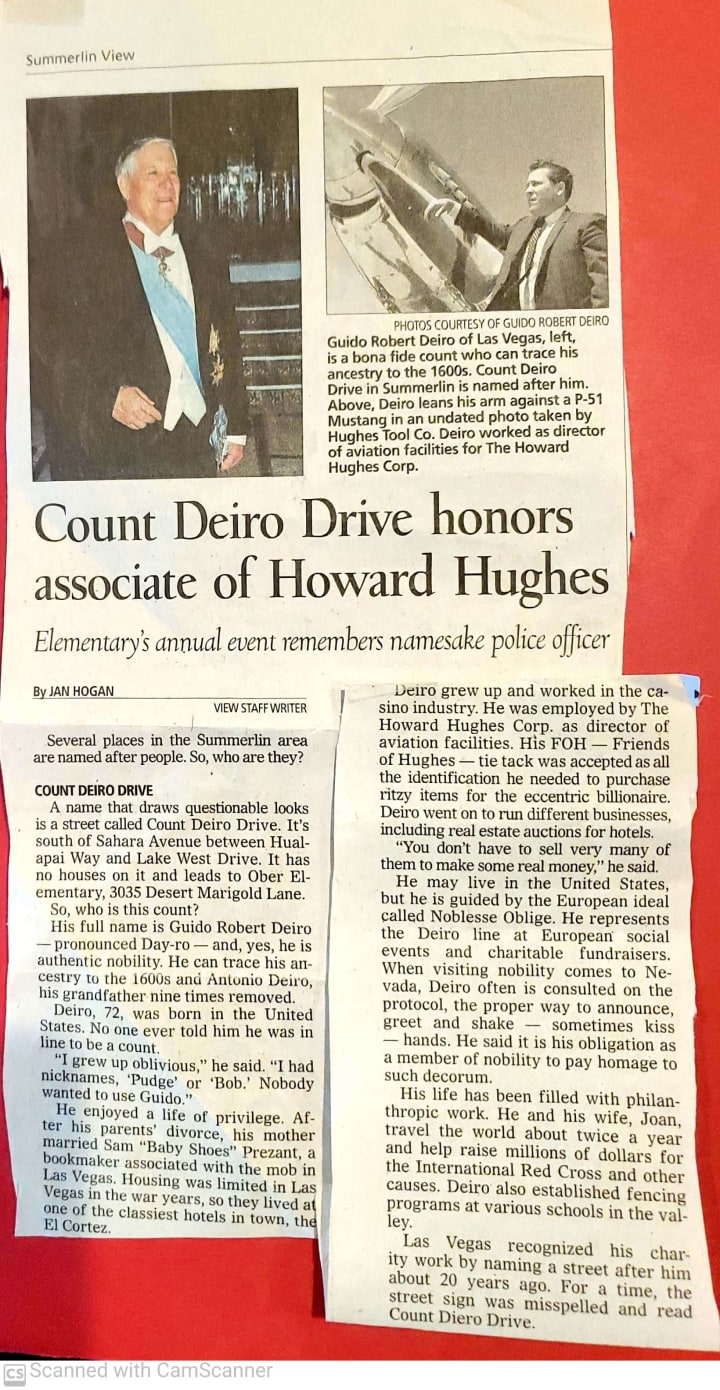
Thirty-five years my senior, the Count told me in our first phone conversation that he had been battling cancer, and may not be long for this world. He said if I wanted to know what he knew, I'd better hurry up.
"Consul," the Count chuckled as he reciprocated my use of his rank when I had address him, "I'll call Gary Magnesen and make the introductions. You and your lovely lady bring the Chilean wine. The Countess and I will have lunch prepared, and I will give you the whole story."
I figured I was in for one hell of a ride.
I had no idea.
About the Creator
Jonathan Warren
Honorary Consul of Monaco, Chairman of the Liberace Foundation for the Performing and Creative Arts, 50 years in Vegas, Citizen of the world.
www.jonathanwarren.me

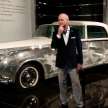
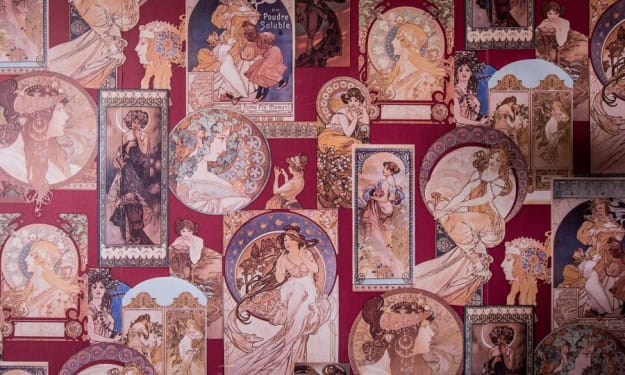



Comments
There are no comments for this story
Be the first to respond and start the conversation.